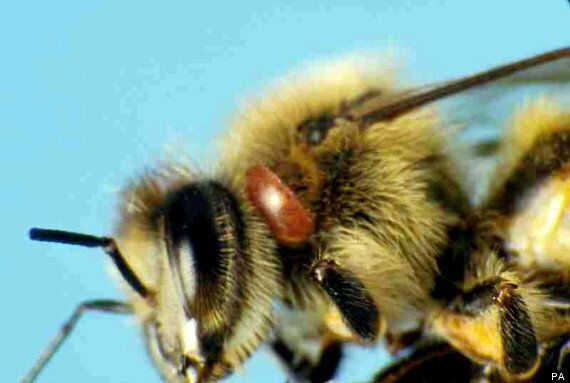Scientists have pinpointed the driving factor behind the alarming worldwide decline of honeybees and the collapse of their colonies.
The Varroa mite has long been implicated in the phenomenon but its exact role and impact had remained unclear.
In order to study the link, scientists, led by Stephen Martin of the University of Sheffield, travelled to Hawaii where the mite had only recently appeared, giving them an opportunity to watch the emergence of the disease for the first time.

The Varroa mite, not much larger than the point of a sharpened pencil, is seen behind the eye of this honey bee
Martin and his team found that the prevalence of a virus known as deformed wing virus (DWV) skyrocketed when the Varroa invaded a colony. DWV, which normally only affected 10% of bees was suddenly affecting 100%.
Not only that, but the amount of virus in each individual increased by a million fold.
Martin and his team identified the mechanisms behind this. Speaking to The Huffington Post UK, Martin said: "The mites give the virus a new transmission route, directly into the bee's bloodstream as it feeds."
This means that the virus bypasses the immune system of the bees, effectively leaving them defenceless which helps to explain the increase in prevalence.
Martin continued: "Also, the mite seems to have selected a strain of the virus which is particularly harmful to bees.
"The virus shortens the life of the bees, effectively halving their lifespans. This makes the colonies unsustainable which leads to their collapse."
Scientists have long warned of the impact that declining numbers of honey bees would have on the planet. In their role as pollinators they are crucial for sustaining ecosystems and food chains.
A recent report from the United Nations Environment Programme estimated that the work that bees and other pollinators do is worth £123 billion to the world economy.